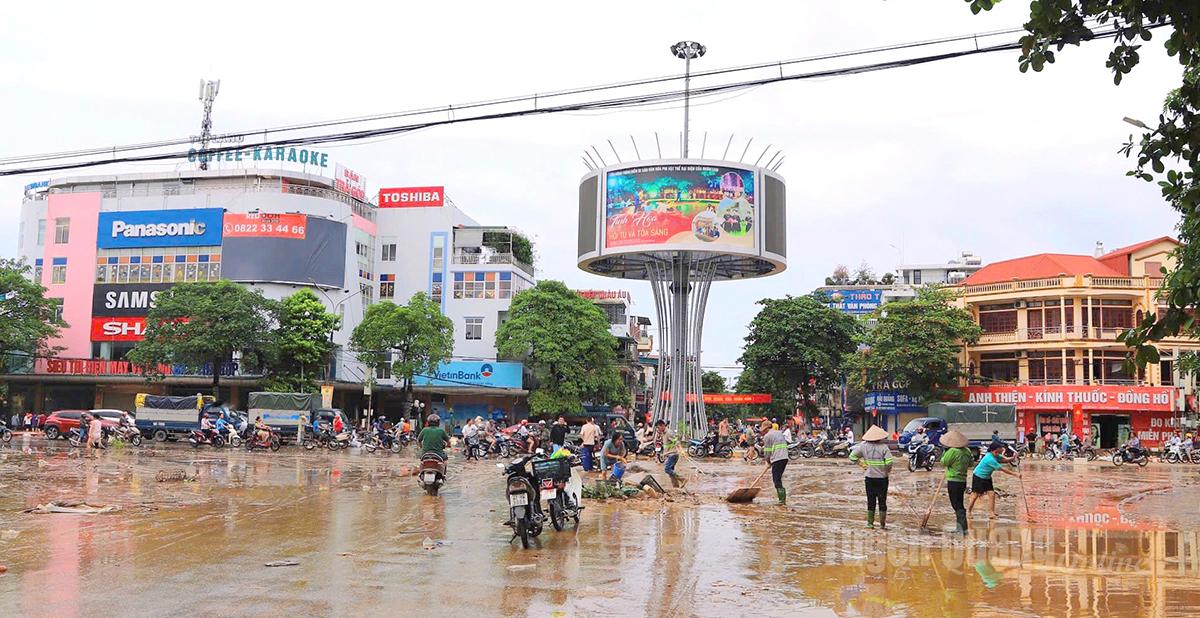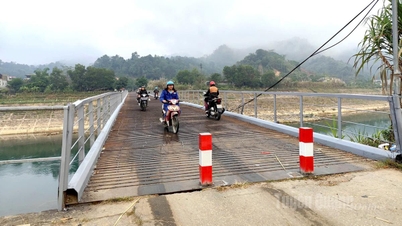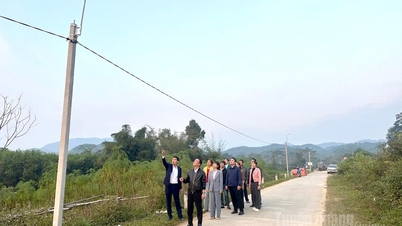 |
Reporter: Sir, as someone who has spent many years researching climate change, can you explain why we've recently seen unusual weather patterns in Northern Vietnam?
Prof. Dr. Tran Tuan Anh: It can be said that the recent historic flood was the result of a rare extreme weather pattern. This combination created a particularly dangerous combination of storm circulation bringing a huge amount of moisture from the sea, while the wind convergence zone acted as a "machine" to lift all that moisture up high, causing strong condensation and forming extremely heavy rains. And in places where the midland and mountainous terrain is high, the ability to drain floods is limited. It is this coincidence that has created serious flooding.
I emphasize that when heavy rains last for a long time, there will be geological changes, most of the area of the Northern mountainous region is made up of ancient rocks that are strongly weathered. The weathered crust like soil reaches a depth of 15m-30m. This crust often contains clay minerals (especially montmorillonite) that change their properties very strongly, especially swelling greatly when there is water, which determines the easy deformation and disintegration properties of this type of soil. The slopes in the mountains are stable in natural conditions, but when encountering the above unfavorable conditions, the durability of the soil decreases and it will collapse, burying everything at the foot of the slope, which is a disaster caused by landslides.
 |
| Due to the impact of storm No. 10, the Lo River water level rose, causing flooding in Ha Giang 1 ward. |
Long-term forecasting of storm levels and rainfall, where they will occur, and the duration of long periods of heavy rain is quite good, but the level of accuracy and detail needs to be further improved. The duration of rain and the amount of rain causing landslides and flash floods in each specific area cannot be fully measured, so when natural disasters occur, they are surprising and passive for the locality. Moreover, because disaster risk scenarios have not been developed to serve the response and search and rescue work, when natural disasters occur, the localities are somewhat passive.
Reporter: So can we give early warning of flash floods, landslides, and geological disasters when there is prolonged heavy rain, sir?
Prof. Dr. Tran Tuan Anh: Currently, there are many technologies and methods for early warning of flash floods, landslides and geological disasters, but they are often effective on a small scale.
For early warning of landslides, methods can be used such as: Installing automatic monitoring equipment to record the displacement of the sliding block. When this displacement exceeds the limit that can cause a disaster, the system will notify the authorities and people to evacuate the dangerous area in time. On the other hand, in many places where there is no mobile phone signal, no internet, no electricity, the work of transmitting signals to the warning analysis center cannot be done. Therefore, we can give a simple early warning to people, that is, when observing cracks appearing on the top of the slope, in the body of the roof there is turbid water flowing out, it is necessary to move away from the slope immediately because the slope is about to collapse.
In my opinion, based on experience, we can observe that the water level of a normal stream suddenly dries up abnormally; or the water of a natural stream suddenly becomes abnormally cloudy, which is a sign that a flash flood is about to happen and we need to evacuate immediately.
 |
| People in Minh Xuan ward, Tuyen Quang province clean up after the flood. |
Reporter: Can you suggest some solutions to prevent and mitigate natural disasters?
Prof. Dr. Tran Tuan Anh: Currently, the disaster risk assessment maps that we have built are at a scale of 1:1,000,000, or 1:500,000, or 1:250,000, which means 1cm on the map is equivalent to 10km, or 5km, or 2.5km at the scene. Therefore, these maps do not show slopes, streams at risk of landslides or flash floods when it rains so that localities can be alert. We do not have detailed statistics and assessments of specific locations at risk of landslides and flash floods.
To minimize the damage caused by landslides and flash floods in mountainous areas, localities need to have statistics at the village level in mountainous areas on the number of slopes and streams that are at risk of causing landslides and flash floods. Localities, especially mountainous localities, need to develop disaster risk scenarios at the village level, which indicate the direction of disaster risks, escape routes and search and rescue plans when disasters occur.
An effective and economical solution to prevent flash floods is to plan safe living spaces, not in places where the flow is directed straight into residential areas (plan residential areas on small curved banks of streams); plan residential areas only on one side of the stream (high banks are better). Or it is possible to build bank protection works, the low bank strip is not built, is the land fund used for farming production and is a flood escape space to reduce flood energy when natural disasters occur.
I note that in the mountainous provinces during the rainy season, flash floods often occur. According to statistics, flash floods often occur in a short period of time from 40 minutes to 1 hour and 30 minutes with terrible destruction. Flash floods occur when two factors exist at the same time: There is loose, poorly bonded soil and rock on the flow path and a flow appears with a speed large enough to sweep away these soil and rock. When it continues to rain for a long time, the amount of accumulated water increases, causing dams to break, creating a flood with a mixture of water, mud, rocks and trees flowing rapidly, destroying all obstacles in the flood's path. Therefore, we need to have a solution to learn to live with climate change, ensuring the safety of people and property of individuals and organizations.
Reporter: Thank you very much.
Performed by: Le Duy
Source: https://baotuyenquang.com.vn/xa-hoi/202510/song-chung-va-duong-dau-voi-bien-doi-khi-hau-e365e91/









































![[Video] The craft of making Dong Ho folk paintings has been inscribed by UNESCO on the List of Crafts in Need of Urgent Safeguarding.](https://vphoto.vietnam.vn/thumb/402x226/vietnam/resource/IMAGE/2025/12/10/1765350246533_tranh-dong-ho-734-jpg.webp)





































































Comment (0)